What’s Rhoenrad
“Rhoenrad(wheel gymnastics)” is originated in Germany. It is known as gym wheel or German wheel. The sport is not well known in Japan, while in overseas countries, especially Europe, it is one of the popular sports. Each competition is held domestically or internationally, practiced wheel gymnasts give their performances. While the sport is instructed to challenged people in many countries, e.g. Germany and Netherlands. Rhoenrad is highly acclaimed as the sport anybody can do.
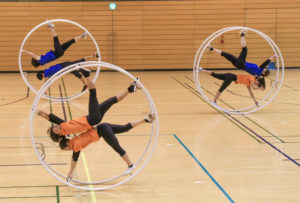 Performance
Performance
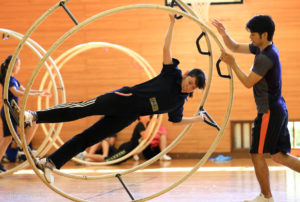 Workshop
Workshop
Effects
Rolling with gym wheel gives exercise for every part of the body. The person who rolls has to keep good posture while he/she is rolling. Rhoenrad is good for body toning. Moreover, the unique movement “upside-down” is unordinary in daily life. It provides various effects, e.g. circulation, prevention of back pain, and posture correction. By the way, Rhoenrad is more safety than it looks and the amount of its exercise is larger than it looks.
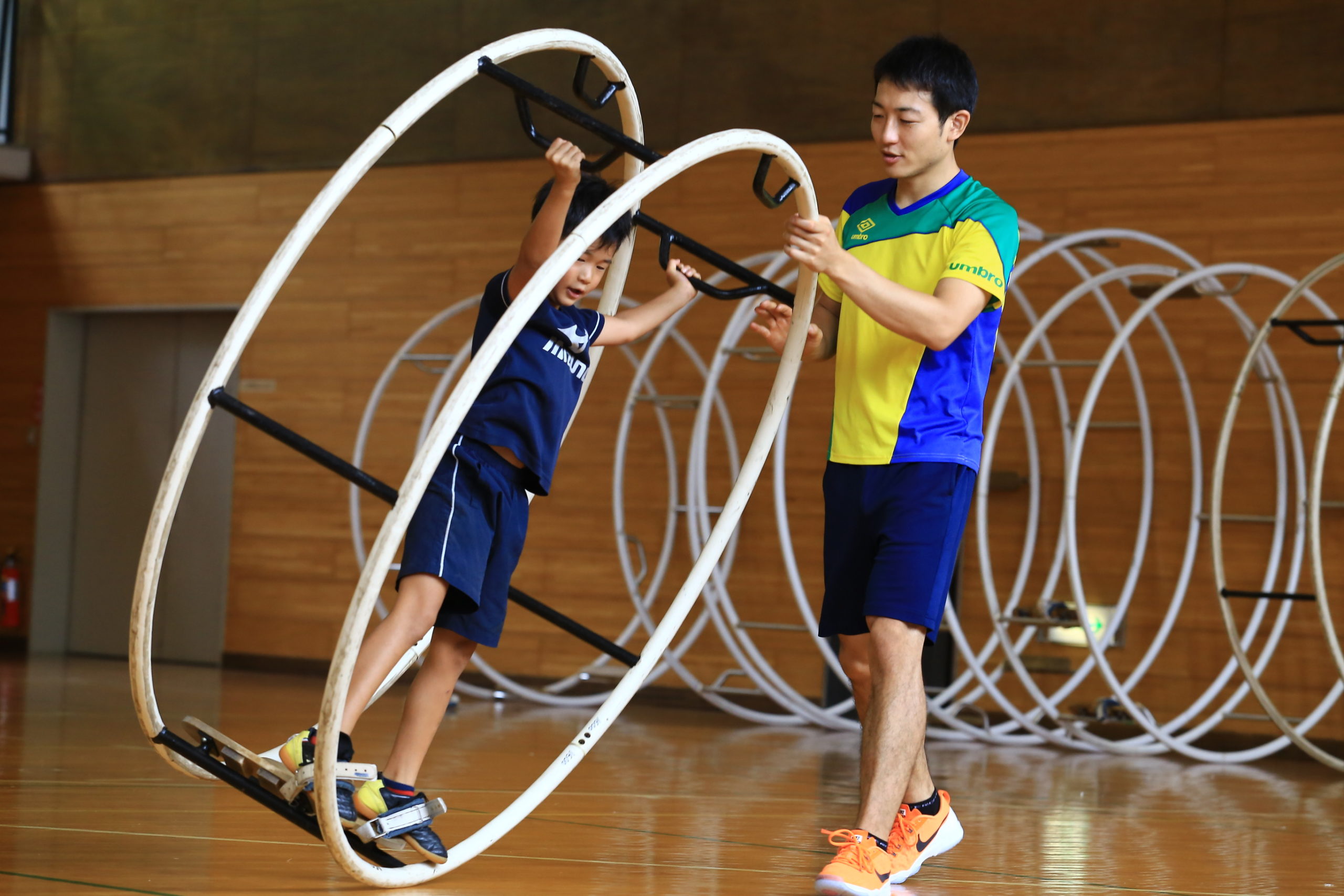
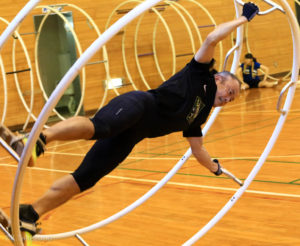
History
Rhoenrad was invented as a playing equipment by Otto Feick in 1925 in Germany. It called “Rhön Rad” in German. It means “the hoop(Rad) which is invented in the district of Rhön-Grabfeld in northern Bavaria, Germany”. In Japan, “Rhön Rad” is called “ラート(Rato)”, since it is difficult for Japanese people to pronounce “Rhön”. Rhoenrad has been developed as playing equipment or sport mainly in Germany. Even though its development was suspended due to WWII. After that first competition was held in 1960 in West Germany. Nowadays, Rhoenrad is continuous developed under German Gymnastic Federation.
While in Japan, Rhoenrad was called “Hoop(フープ)” or “Soutenki(操転器: it means a rolling equipment)” during the WWII. After the wartime, it was vanished. In 1989, Mr. Kiyonao Hasegawa brought it to Japan from Germany when he finished studying abroad. (Mr. Hasegawa is Professor in the University of Tsukuba. At that time he was a Lecturer in Tokai University.) This is the origin of “ラート(rato)” in Japan.
The development of Rhoenrad was started as new kind of sport in Japan. Nowadays, it has been experienced and enjoyed by many people, regardless of age and who has handicap.
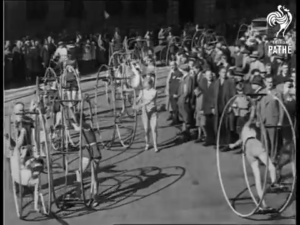

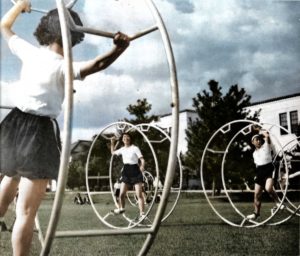
Competition Rules
競技は3種目(直転・斜転・跳躍)から成り立ち、全ての種目は、男女別・個人別に行われています。現在、国内では年に1回の全日本選手権大会、全日本学生選手権大会、ジュニア大会、○○カップ大会(○○はその年の開催地名)を開催しています。
国外では世界選手権大会とチームカップ(国別団体戦)が開催されています。
採点方法は、満点(大会により異なる)からの減点方式です。直転と斜転の場合は実施点、構成点、難度点の合計、跳躍の場合は実施点と難度点の合計が最終得点となります。跳躍では2回の試技が行われ、高い方の得点が最終得点として採用されます。
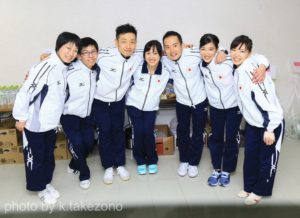 2019年度世界ラートチームカップ日本代表選手団
2019年度世界ラートチームカップ日本代表選手団
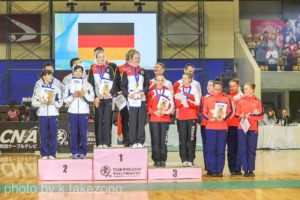 2019年度世界ラートチームカップ表彰式
2019年度世界ラートチームカップ表彰式
Disciplines
【Straight-line】
直転種目は、二本のリングを床に接地させて、車輪のように前後に回転をする種目です。 直転種目の回転運動の技術は、大きく分けると中心系運動と、周辺系運動の二つにわけられます。中心系運動とは、体がラートの中央に位置した状態でおこなう運動です。周辺系運動とは、体がラートの周辺、または外に位置した状態でおこなう運動です。【Spiral】
斜転種目は、どちらか一方のリングだけを床に接地させて、コインが円を描きながら転がる様に回転をする種目です。 斜転種目の回転運動を大きく分けると、大斜転の運動と小斜転の運動の二つにわけられます。大斜転とは、ラートの傾斜を60度以上にして回転をおこなう運動です。小斜転とは、ラートの傾斜を30度以下にして回転をおこなう運動です。【Vault】
跳躍種目は、転がしたラートに向かって短い助走をして跳び上がり、回転しているラートの上を越えたり、ラートの上に乗ってから跳び下りたりする種目です。 ラートの上を跳び越す際に行うのは支持転回などです。ラートの上から飛び降りる際に行うのは垂直跳びや宙返りなどです。Equipment
使用するラートの円の直径は、身長により異なります。身長プラス35~45cm が目安です。
例)身長160cmの人:直径195〜205cmのラート
※小学校低学年以下の子どもであれば、身長プラス30~40cmが目安です。
ラート運動を行うためには、ステップと足を固定するベルト(ビンディング)が必要です。かかとサポート付補助ベルトと、競技会・認定会用ベルトの2種類があります。用具販売についてはこちら
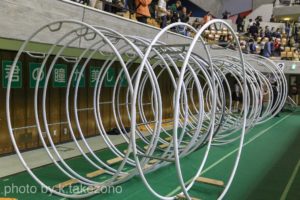 様々なサイズのラート
様々なサイズのラート
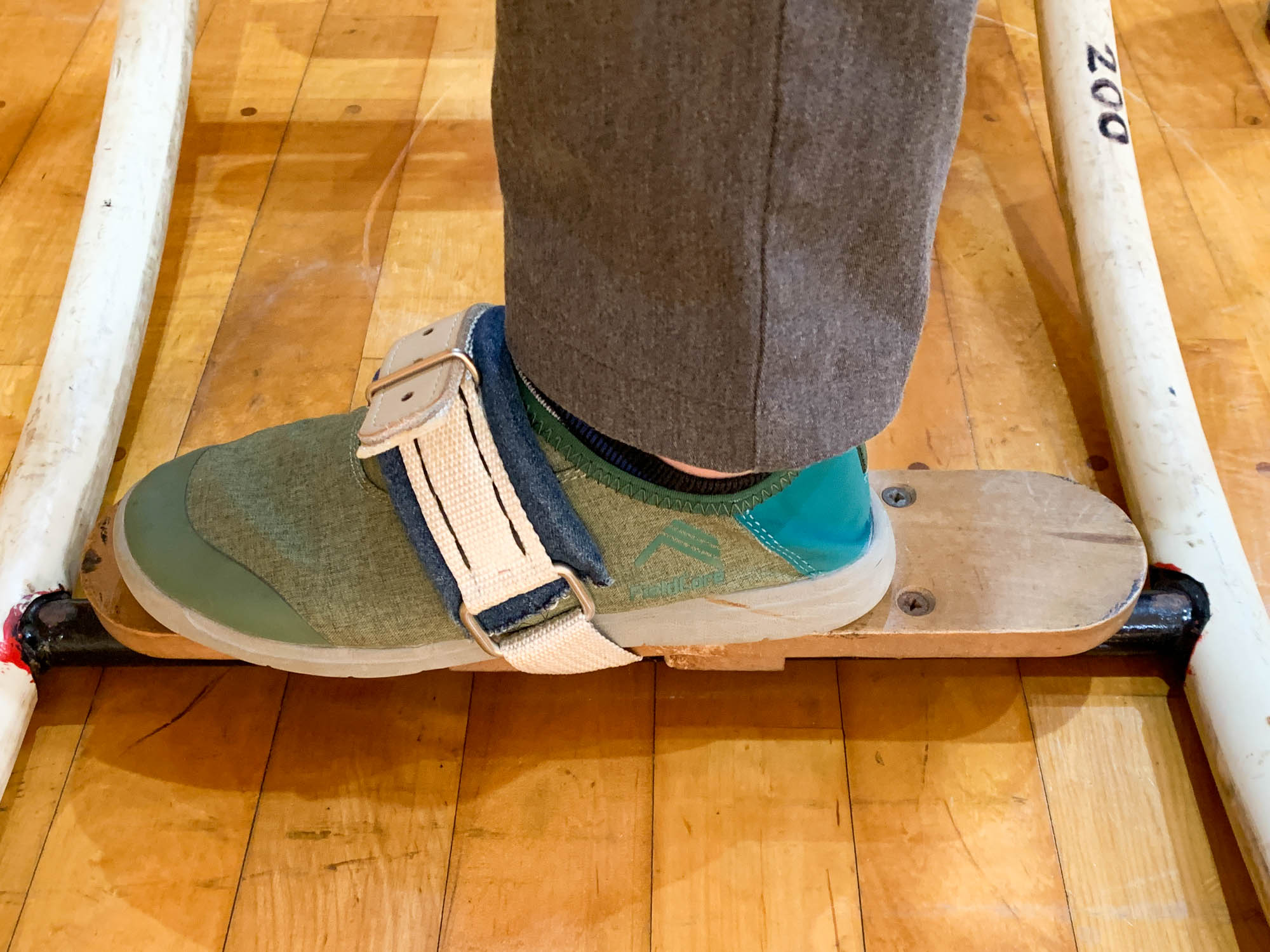 ラート用ベルト
ラート用ベルト